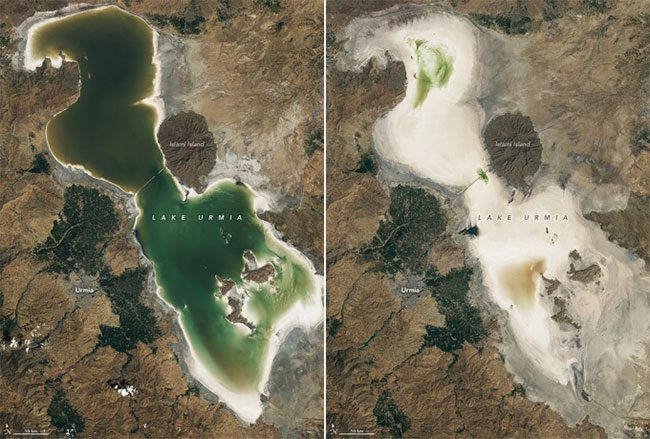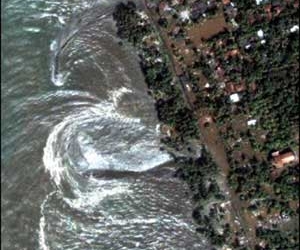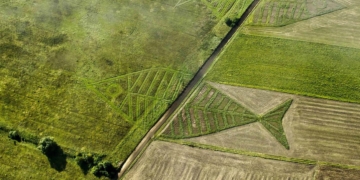Satellite images reveal that Urmia saltwater lake was flooded in September 2020, but by September this year, it has almost turned into a vast salt flat.
Covering an area of approximately 5,200 km2, Lake Urmia in northwestern Iran was once the largest lake in the Middle East and one of the saltiest lakes on Earth at its peak. However, this body of water now resembles a vast salt plain, as reported by SciTechDaily on October 15. The change is evident in images captured by the Landsat 8 satellite in September 2020 and images from the Landsat 9 satellite in September 2023.

Lake Urmia in satellite images from September 2020 (left) and September 2023 (right). (Image: NASA).
In 2020, most of the lake’s basin was filled with water, with salt only visible around the edges. This was due to above-average rainfall in the preceding period, which caused freshwater to flow into the lake and expand its water area. However, since then, dry conditions have led to a drop in water levels.
The long-term trend for Urmia is one of drying up. In 1995, Lake Urmia had high water levels, but over the next two decades, its water level decreased by more than 7 meters and lost about 90% of its area. Continuous drought, agricultural water usage, and the construction of dams on rivers feeding the lake have contributed to this decline.
The shrinking of Lake Urmia has significant impacts on the ecosystem and human health. The lake, its islands, and the surrounding wetlands create a valuable natural habitat recognized as a UNESCO Biosphere Reserve, a Ramsar site (wetlands of international importance under the Ramsar Convention), and a national park. It is a breeding ground for waterbird species such as flamingos, white pelicans, and white-headed ducks, as well as a stopover point for migratory species. However, with the decreasing water levels, the remaining water in the lake has become saltier, affecting shrimp populations and other food sources for larger animals.
The drying lake also increases the risk of dust being blown from the lakebed, reducing air quality. Recent studies indicate that the low water levels in Lake Urmia are affecting the respiratory health of local residents.
The impacts of climate, water usage, and dams on Lake Urmia’s water levels remain a topic of debate. The lake has shown some recovery during a 10-year restoration program initiated in 2013. However, the actual effectiveness of the program is difficult to assess due to substantial rainfall that occurred during that time. Some studies conclude that new climatic factors played a key role in the recovery.





















































